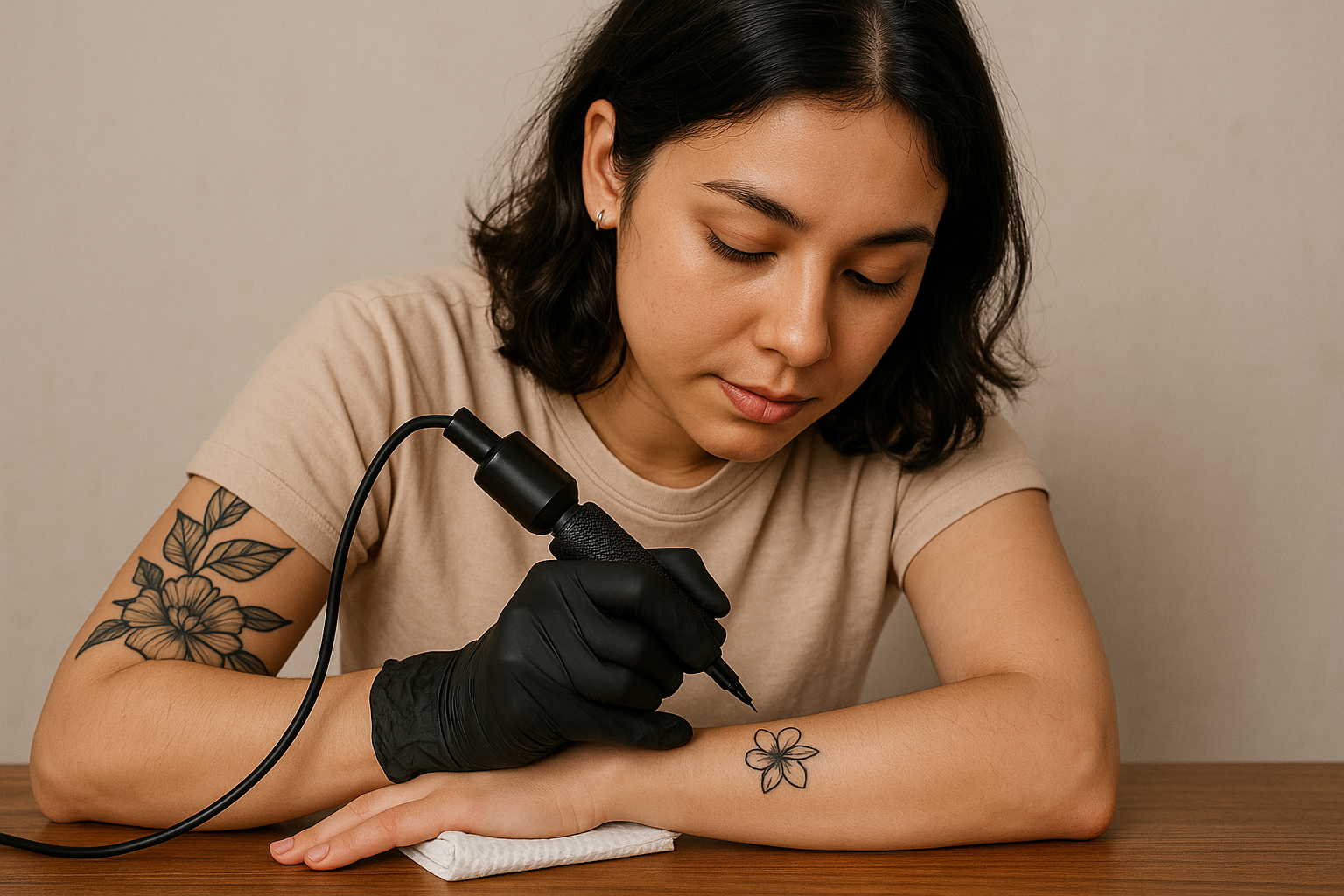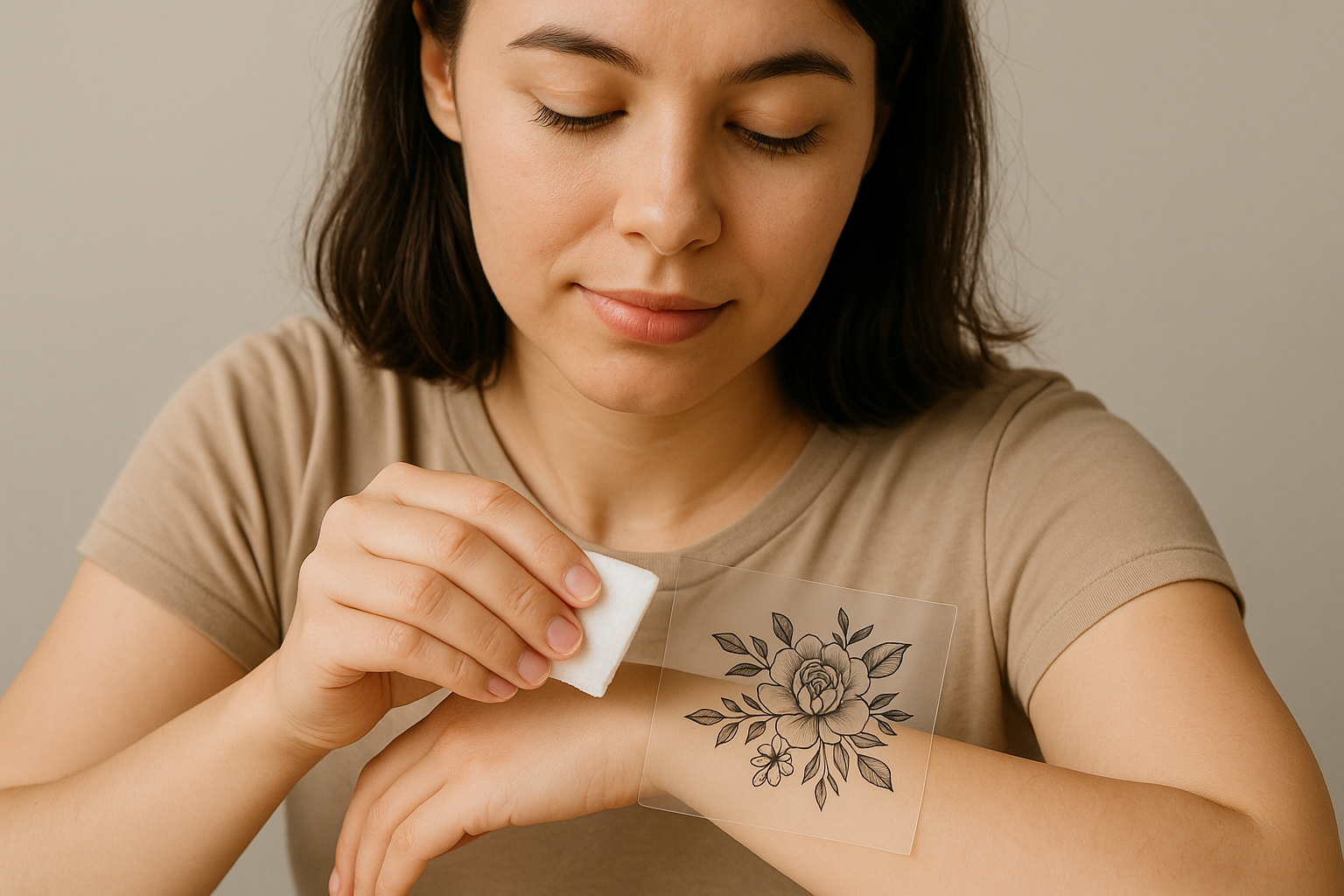
Tattoo tips for beginners: a safe & stunning DIY guide
Dreaming of your first tattoo but not sure where to start? Whether you're exploring body art for style, expression, or curiosity, diving into the world of ink can feel both exciting and intimidating. Luckily, you're not alone—and this comprehensive guide will take you through every single step with clarity, safety, and a pinch of DIY magic.
Learn how to tattoo for beginners step by step using safe, hypoallergenic methods. From prep to aftercare, we break it all down in this tattoo tutorial for beginners. Ready to begin your ink journey? Let’s dive in.
Getting Started: Why Preparation Is Half the Tattoo
Clean Skin = Happy Ink
Before even thinking about the needle, your canvas—aka your skin—needs some TLC. Wash with a gentle, fragrance-free cleanser, and exfoliate lightly. This helps the ink sit better and reduces the risk of irritation.
Patch Test Products
Use hypoallergenic transfer gels, liners, and inks. Always patch test 24 hours before the full process. A PubMed study highlights that over 10% of first-time users may show minor allergic responses (source).
Design with Purpose
Start with simple linework or symbols. Beginners often choose temporary tattoo designs first—browse our curated collection here. Trace your design onto transfer paper or use stencils.
The Tattoo Step-by-Step Process: From Idea to Ink
Step 1: Shave and Sterilize
Use a new, clean razor to remove hair, and sanitize the skin with alcohol or a suitable disinfectant. This helps prevent ingrown hairs or infection.
Step 2: Apply Stencil
Transfer your design using skin-safe stencil gel. Let it dry for 10 minutes before starting. This is your map—don't skip it.
Step 3: Glove Up
Always wear nitrile gloves. They’re hypoallergenic and protect you from bacteria transfer.
Step 4: Line Work
Start your tattoo using a single needle or liner. Hold the tattoo pen like a pencil. Don’t go too deep—1–2 mm is enough. Practice on fake skin first.
Step 5: Add Color or Shading
Begin light. Fill areas slowly, working in circles or crosshatch lines. Avoid oversaturating one spot—this could damage the skin.
Aftercare Matters: Healing Is Part of the Art
Step 1: Clean Gently
Wipe with a hypoallergenic, alcohol-free wipe. Then apply a thin layer of ointment.
Step 2: Moisturize Daily
Use fragrance-free, soothing lotions—preferably those certified by ECOCERT or dermatologically tested.
Step 3: Avoid These
- No swimming for 2 weeks
- No sunbathing
- No picking or scratching
Pro Tip: According to ECOCERT dermatological research, post-tattoo care with certified natural balms reduces skin reactivity by over 60%.
Common Beginner Mistakes & How to Avoid Them
Mistake #1: Going Too Deep
Too much pressure can cause scarring. Stick to the upper dermis.
Mistake #2: Skipping Sterilization
Never reuse needles. Use only disposable or professionally sterilized tools.
Mistake #3: Poor Design Choice
Start small. Don’t attempt complex portraits or tiny fonts on your first try.

Tools of the Trade: Must-Haves for Beginners
DIY Kit Essentials
- Sterile tattoo pen or hand-poke tool
- Transfer paper and gel
- Hypoallergenic black ink
- Practice skin
Safety Add-Ons
- Alcohol wipes
- Latex-free gloves
- Sanitary wrap
Tattoo Tutorial for Beginners: What Sets a Good Tattoo Apart?
Skill Over Speed
Your first tattoo should take time. Precision is everything.
Learn from Pros
Watch verified video tutorials and read up on tattooing hygiene. Check out our linked guide:
Read more: "What to Know Before Your First Tattoo"
FAQs (Schema-Optimized)
Q1: Is it safe to tattoo yourself at home as a beginner?
Yes, if you follow strict hygiene guidelines, use hypoallergenic products, and start with simple designs on non-sensitive areas.
Q2: How deep should a tattoo needle go?
1 to 2 millimeters—just enough to reach the upper dermis, avoiding the fat layer.
Q3: How do I avoid infections when tattooing at home?
Use sterilized tools, wear gloves, and follow proper aftercare. Never reuse needles.
Q4: Can I use temporary tattoos to test a design?
Absolutely! They’re great for planning placement and getting comfortable with the look.
Q5: What’s the best area for a first tattoo?
Try the forearm or outer thigh—flat, less painful, and easy to tattoo.
Still Deciding? Try Taking These Steps by Focusing on The Benefits of
- Skin-safe inks with ECOCERT certification
- Easy-grip tattoo pens for full control
- Stencil sets perfect for DIY beginners
- Hypoallergenic aftercare kits
Try a beginner-friendly kit now — stock is limited.
Finding the Right Tattoo Artist or Starting as One
If you're not quite ready to tattoo yourself, visiting a tattoo artist is the safest way to begin. A certified professional not only ensures sterilized equipment but also brings years of hands-on experience and artistic mastery. Many beginners start their journey by getting a small piece from a local artist to observe the process up close.
Tip: Watch how the tattoo artist prepares the skin, holds the tattoo machine, and applies pressure. You’ll learn more in one appointment than in hours of tutorials.
For those dreaming of becoming a tattoo artist, it's essential to build a strong foundation. Start by learning on synthetic skin and gradually move to live models under supervision. Taking an apprenticeship in a licensed tattoo shop can also accelerate your progress, giving you access to professional feedback and real-world practice.
Choosing and Using a Tattoo Machine: What Beginners Must Know
Before you start tattooing, understanding your tattoo machine is crucial. There are two main types: coil and rotary. For beginners, rotary machines are easier to manage—they’re quieter, lighter, and require less maintenance.
Always test your tattoo machine on practice skin. Adjust the needle depth, speed, and grip until it feels stable in your hand.
If you're serious about your tattooing journey, consider visiting a reputable tattoo shop not just as a client but as a learner. Many shops offer starter kits and workshops designed for aspiring artists. Surrounding yourself with professionals can spark new techniques and introduce you to important hygiene protocols.
Thinking of opening your own tattoo shop someday? Start building your portfolio early and focus on consistent, clean work.
Final Words: Your First Steps For Beautiful Tattoo Starts Here
Every masterpiece begins with a single line. And your journey into ink doesn’t have to be risky or rushed. Use clean, beginner-safe tools, stay informed, and treat your skin like the canvas it is. Want to start small and safe?
Buy now — 24h delivery available.
Sources
- PubMed: Incidence of Skin Reactions in Tattooing
- ECOCERT: Certification Standards for Hypoallergenic Cosmetics
- American Academy of Dermatology: Tattoo Aftercare and Safety




